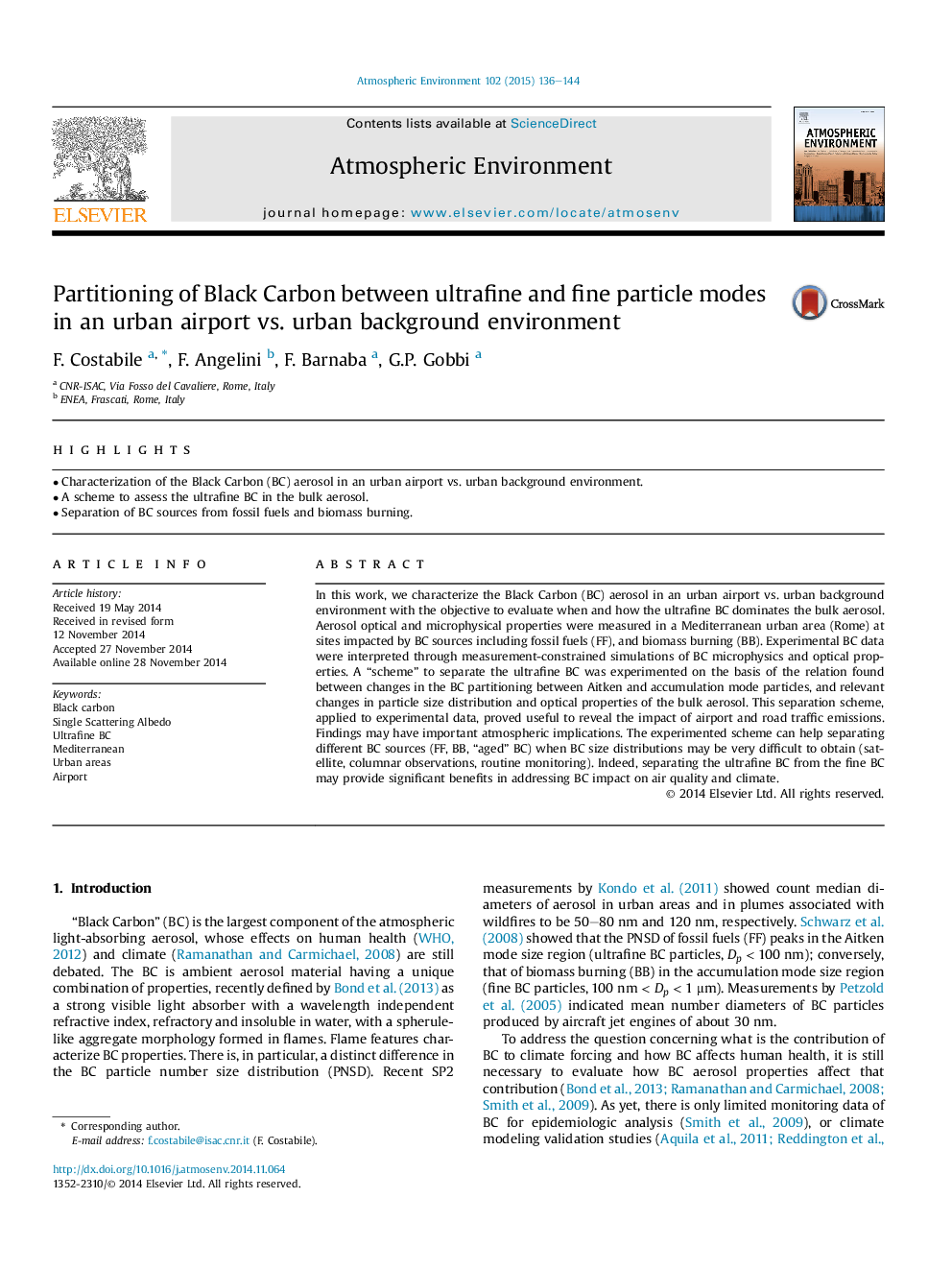| Article ID | Journal | Published Year | Pages | File Type |
|---|---|---|---|---|
| 6338839 | Atmospheric Environment | 2015 | 9 Pages |
Abstract
In this work, we characterize the Black Carbon (BC) aerosol in an urban airport vs. urban background environment with the objective to evaluate when and how the ultrafine BC dominates the bulk aerosol. Aerosol optical and microphysical properties were measured in a Mediterranean urban area (Rome) at sites impacted by BC sources including fossil fuels (FF), and biomass burning (BB). Experimental BC data were interpreted through measurement-constrained simulations of BC microphysics and optical properties. A “scheme” to separate the ultrafine BC was experimented on the basis of the relation found between changes in the BC partitioning between Aitken and accumulation mode particles, and relevant changes in particle size distribution and optical properties of the bulk aerosol. This separation scheme, applied to experimental data, proved useful to reveal the impact of airport and road traffic emissions. Findings may have important atmospheric implications. The experimented scheme can help separating different BC sources (FF, BB, “aged” BC) when BC size distributions may be very difficult to obtain (satellite, columnar observations, routine monitoring). Indeed, separating the ultrafine BC from the fine BC may provide significant benefits in addressing BC impact on air quality and climate.
Related Topics
Physical Sciences and Engineering
Earth and Planetary Sciences
Atmospheric Science
Authors
F. Costabile, F. Angelini, F. Barnaba, G.P. Gobbi,
